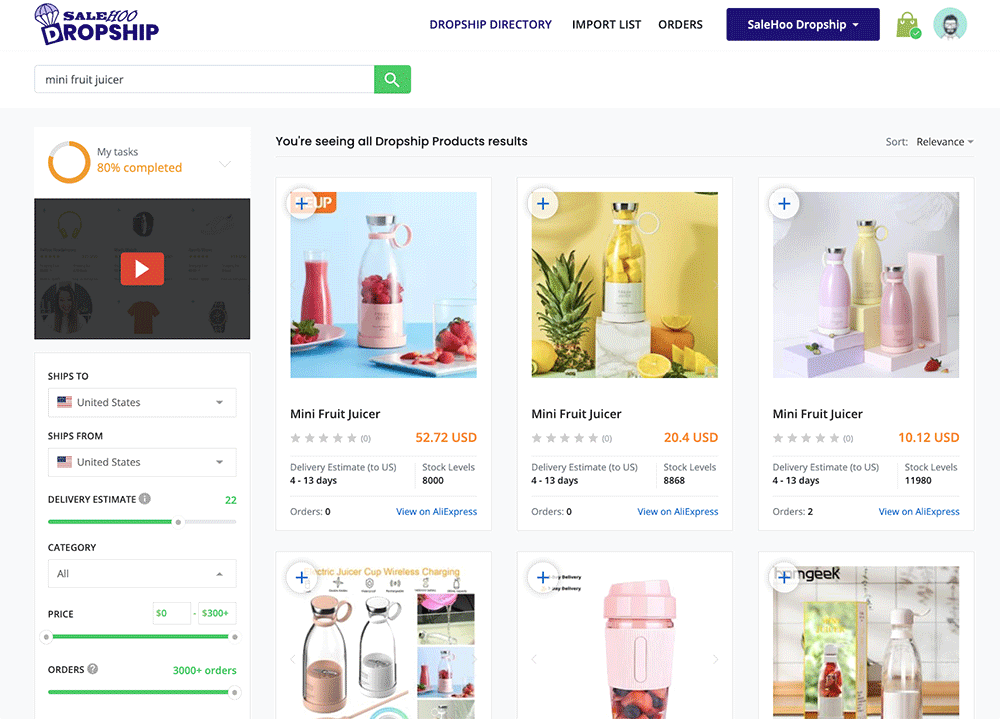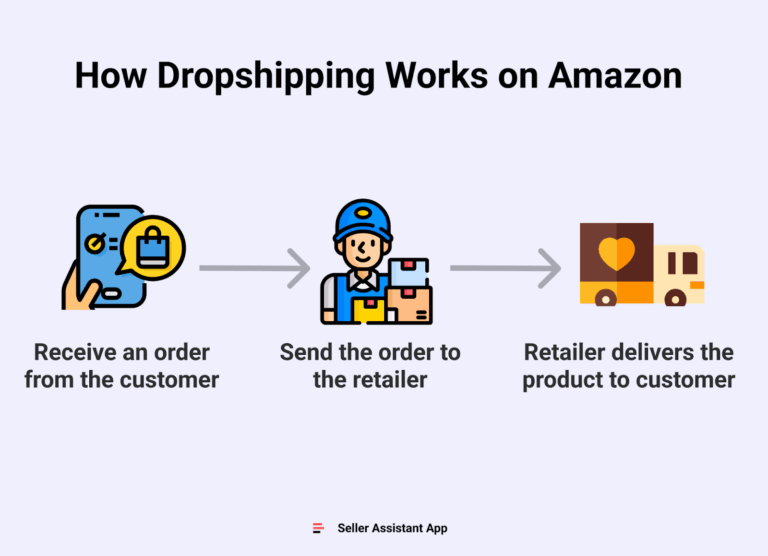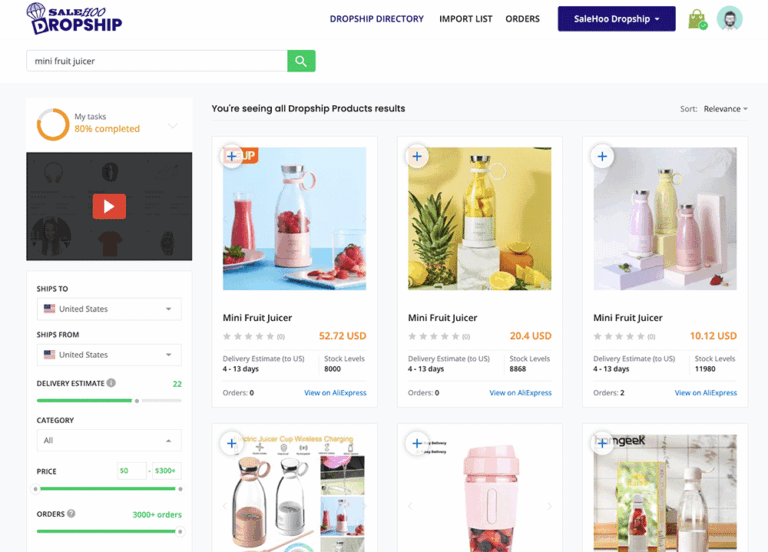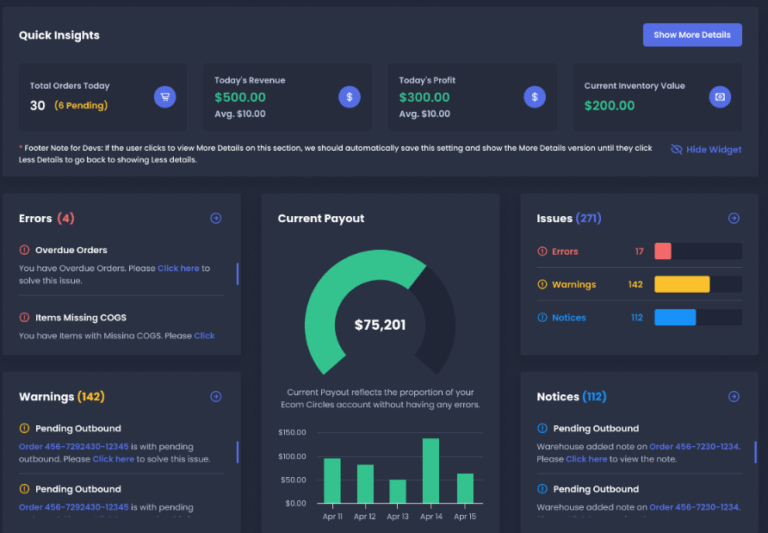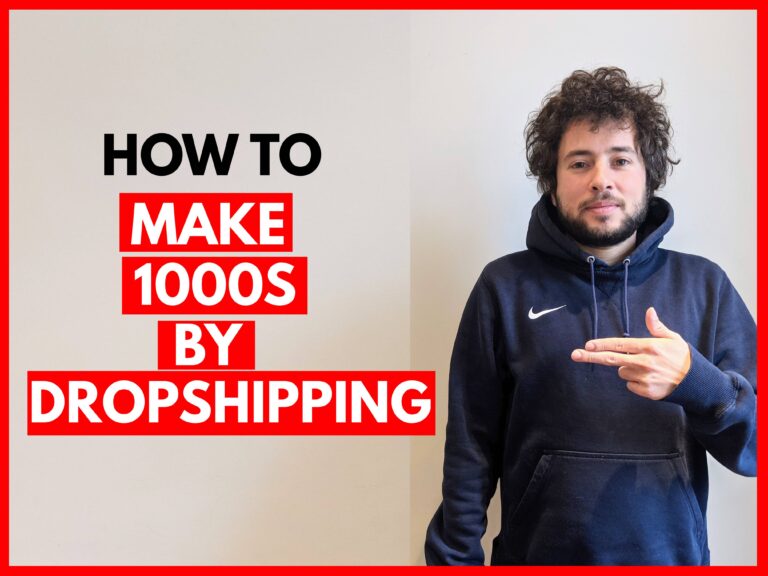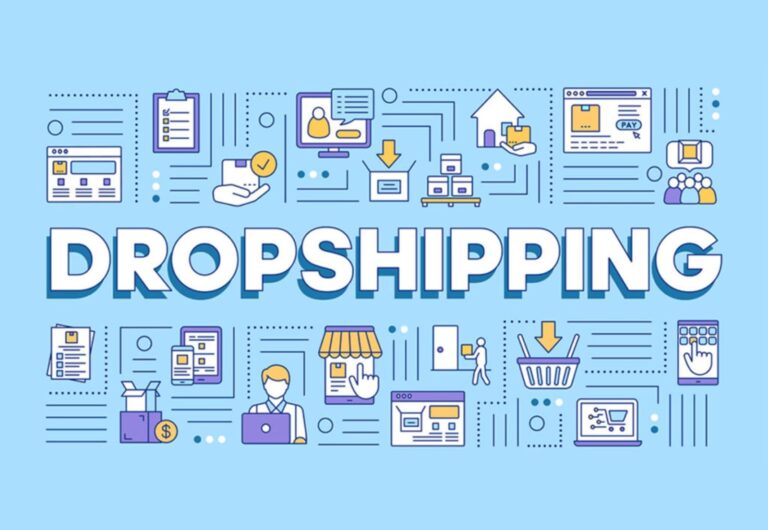What Is Dropshipping and How Does It Work? (2025)
Your Complete Guide to premade dropshipping stores
Welcome to Your Entrepreneurial Journey
Congratulations on taking the first step toward starting your own online business! Your ambition to carve out a space in the e-commerce landscape is commendable, and with the right tools and knowledge, you can turn that dream into a reality. If you’re looking for a low-risk way to enter the world of retail, dropshipping might just be your ticket.
So, what exactly is dropshipping? At its core, dropshipping is a retail fulfillment method where you don’t have to hold inventory. Instead, when a customer places an order in your online store, you purchase the item from a third party—usually a wholesaler or manufacturer—who then ships it directly to the customer. This means you can focus on marketing and sales without the complexities of inventory management. The appeal is undeniable: low startup costs, minimal overhead, and the flexibility to run your business from anywhere in the world.
In this comprehensive guide, we will walk you through the entire process of launching your very own premade dropshipping store. We’ll cover everything you need to know, from identifying a profitable niche and finding trending products to effectively marketing your store and making your first sale. You’ll learn about various platforms, including Shopify, and how to leverage them to create a stunning online presence.
We’ll also explore the benefits of purchasing a premade store, which can save you valuable time and effort. With premade stores, you get a head start with preloaded products, established supplier connections, and beautiful designs—all set up and ready to go.
By the end of this guide, you’ll have a complete roadmap to navigate the world of dropshipping, turning your entrepreneurial aspirations into tangible results. Remember, every successful business started as an idea, and with determination and the right strategies, you can build a thriving online store.
So, are you ready to take the plunge? Let’s embark on this exciting journey together and turn your entrepreneurial dream into a flourishing reality!
What You’ll Learn In This Guide
- Your Complete Guide to premade dropshipping stores
- How Does Dropshipping Actually Work? A Step-by-Step Breakdown
- The Pros and Cons of Dropshipping: Is It Right for You?
- Step 1: Finding a Profitable Niche and Winning Products
- Step 2: Choosing the Right Dropshipping Suppliers
- Step 3: Building Your Online Store
- Step 4: Marketing Your Dropshipping Business to Get Sales
- Common Mistakes to Avoid as a Beginner
- Frequently Asked Questions (FAQs) about premade dropshipping stores
- Conclusion: Your Next Steps to Launching Your Business
- Important Disclaimer
How Does Dropshipping Actually Work? A Step-by-Step Breakdown
Understanding the Dropshipping Model: A Step-by-Step Guide
Starting a dropshipping business can feel like navigating uncharted waters, but once you understand the flow of money and goods, it becomes much clearer. Think of yourself as the digital storefront—a bridge connecting customers to suppliers without ever holding inventory. Here’s a breakdown of how dropshipping actually works, step by step.
1. Customer Places an Order on Your Online Store
The journey begins when a customer visits your online store and decides to make a purchase. This is where your marketing efforts pay off; a well-designed website and effective advertising can attract potential buyers. When they find a product they like and complete the checkout process, they are officially your customer.
2. You Receive the Payment
Upon completing the order, the customer pays you directly. This payment typically includes the retail price of the product, which you set based on your desired profit margin. For example, if the product costs you $20 from the supplier and you sell it for $40, you pocket the $20 difference. This is your potential profit, minus any transaction fees from payment processors.
3. You Forward the Order to Your Supplier
After receiving the payment, the next step is to place the order with your supplier. You’ll need to provide them with the customer’s details and the product they ordered. This process is usually straightforward; most suppliers have systems in place to make this seamless. It’s like being a middleman in a relay race—you’re passing the baton (the order details) to the next runner (the supplier) who will take it from there.
4. The Supplier Ships the Product Directly to the Customer
Here’s where the magic of dropshipping happens: the supplier takes care of packaging and shipping the product directly to the customer. You don’t have to worry about inventory storage, packing boxes, or shipping logistics. This means you can focus on what really matters—marketing your products and enhancing customer relationships.
The Flow of Money and Goods
In dropshipping, the flow of money is as follows:
– Customer Payment: The customer pays you when they place an order.
– Supplier Payment: You then pay the supplier for the product, which is typically less than what the customer paid you.
– Your Profit: The difference between what the customer paid and what you pay the supplier is your profit.
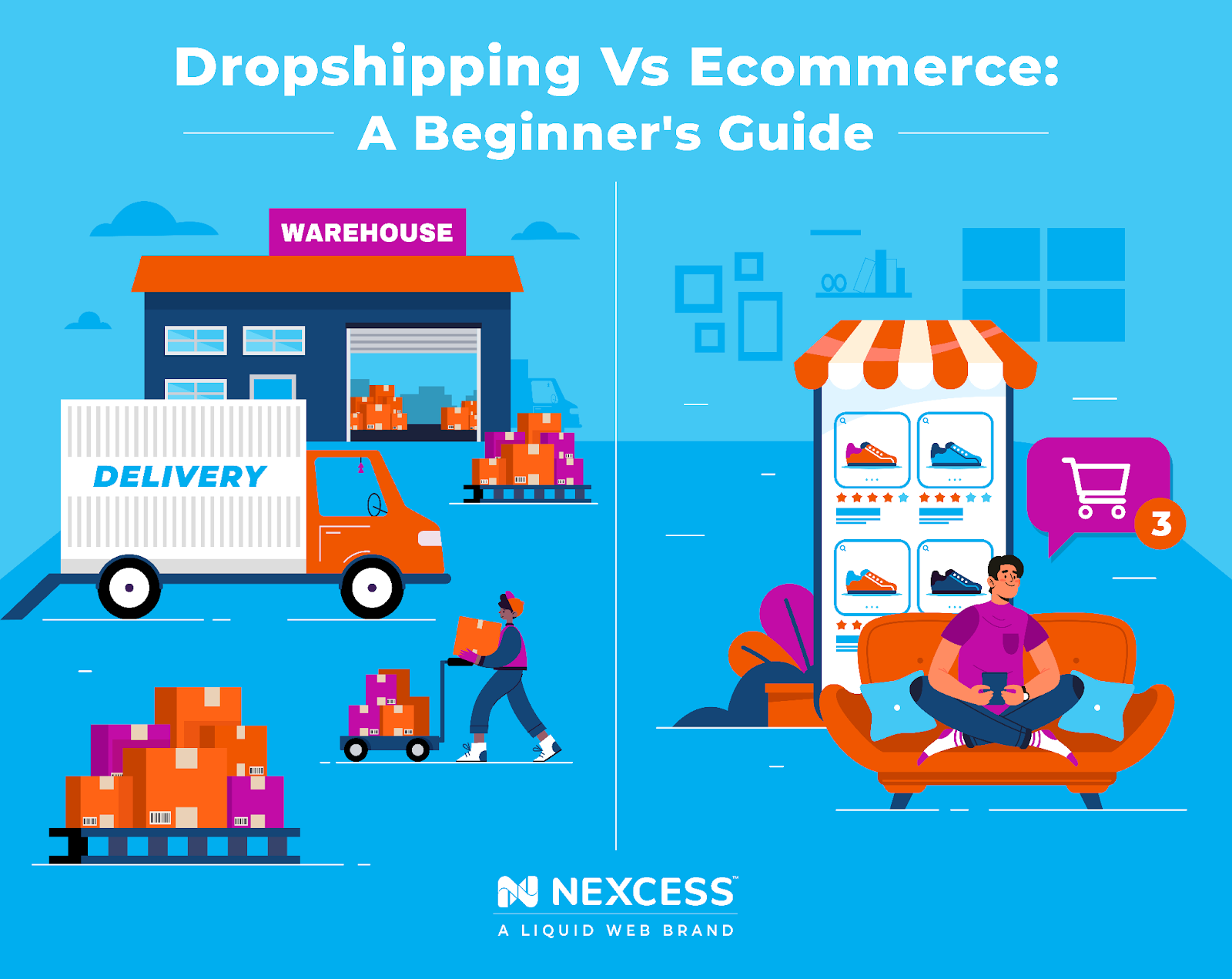
The flow of goods is simple:
1. The customer orders from you.
2. You forward that order to the supplier.
3. The supplier ships the product directly to the customer.
An Analogy to Simplify the Concept
Imagine you’re running a café that doesn’t actually make any food. Instead, when a customer orders a sandwich, you call up a nearby deli and place the order for them. The deli prepares the sandwich and delivers it directly to your café. The customer pays you at your café, and you keep the difference between what you charged them and what you paid the deli.
Conclusion
By following these steps, you can effectively run a dropshipping business without the complexities of inventory management. With the right tools and a clear understanding of how money and goods flow in this model, you can create a successful online business with minimal upfront investment. Remember, the key is to focus on marketing and customer service to ensure a steady stream of orders. Embrace the journey, and enjoy the entrepreneurial adventure ahead!
The Pros and Cons of Dropshipping: Is It Right for You?
Advantages and Challenges of Dropshipping
| Advantages of Dropshipping (Pros) | Challenges of Dropshipping (Cons) |
|---|---|
| Low Upfront Investment | Lower Profit Margins |
| You can start a dropshipping business with minimal initial investment, often as low as $29 for a pre-built store. | Due to high competition, profit margins can be thin, often ranging from 10% to 30%. |
| No Inventory Management | High Competition |
| You don’t have to worry about purchasing, storing, or managing inventory, which simplifies operations. | Many entrepreneurs are entering the dropshipping market, making it difficult to stand out. |
| Flexibility and Scalability | Dependence on Suppliers |
| You can run your business from anywhere, and scaling up is easier since you don’t have to manage inventory. | Your business relies heavily on suppliers for product quality and delivery times. |
| Wide Product Range | Customer Service Challenges |
| Access to a vast array of products allows you to cater to various niches without the risk of unsold inventory. | Handling customer inquiries and complaints can be challenging, especially when relying on third-party suppliers. |
| Automated Processes | Branding Limitations |
| Many aspects of dropshipping can be automated, including order processing and inventory updates. | Standing out can be difficult since many stores sell similar products from the same suppliers. |
| Low Risk of Unsold Inventory | Potential for Supplier Issues |
| Since you only purchase products after a sale, the risk of unsold stock is significantly minimized. | Issues with suppliers can lead to delays in fulfillment or quality problems, impacting your reputation. |
| Easy to Test New Products | Learning Curve |
| You can quickly test new products and niches without a significant financial commitment. | While the model is straightforward, effective marketing and store management require learning and experience. |
Expanding on the Advantages
One of the most compelling reasons to consider dropshipping is the low upfront investment. This model allows aspiring entrepreneurs to start their online business with minimal financial risk. For instance, purchasing a pre-built dropshipping store can cost as little as $29, enabling you to enter the market without a hefty financial burden. This low-risk approach is particularly appealing for beginners who may not have extensive resources or experience.
Another significant advantage is the flexibility and scalability that dropshipping offers. You can manage your business from anywhere, making it ideal for those looking to create a side hustle or a full-time income without being tied to a physical location. Moreover, scaling your business is seamless; as demand grows, you can easily add more products to your store without worrying about storage or inventory management.
The wide range of products available through dropshipping is also noteworthy. This allows you to cater to various niches and adapt to market trends without the risk of holding unsold inventory. With the ability to test new products quickly, you can identify what resonates with your audience and adjust your offerings accordingly.
Delving into the Challenges
Despite the benefits, there are notable challenges associated with dropshipping that aspiring entrepreneurs should consider. A significant drawback is the lower profit margins. Due to the competitive nature of the market, many dropshippers are forced to keep prices low to attract customers, which can result in profit margins as thin as 10% to 30%. This necessitates a higher volume of sales to achieve sustainable income.
Another challenge is the high competition in the dropshipping space. With many entrepreneurs entering the market, differentiating your store can be a daunting task. Standing out among numerous similar offerings requires strategic marketing efforts and a unique value proposition.
Moreover, dropshippers are heavily dependent on their suppliers. If a supplier fails to deliver on time or provides low-quality products, it reflects poorly on your business and can lead to customer dissatisfaction. This dependence can be risky, especially if the supplier experiences issues that are beyond your control.
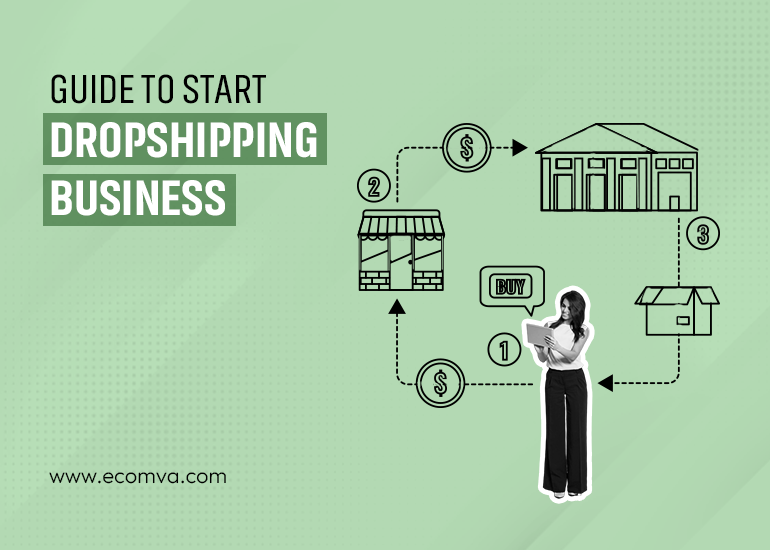
Finally, while the dropshipping model is relatively easy to start, there is a learning curve involved in effectively managing a store and marketing products. Understanding the nuances of digital marketing, customer service, and eCommerce platform management is essential for long-term success.
Conclusion
In summary, dropshipping presents an appealing opportunity for aspiring entrepreneurs due to its low financial risk and operational flexibility. However, it is essential to weigh these advantages against the challenges of lower profit margins, intense competition, and reliance on suppliers. If you are willing to invest the time and effort to learn and adapt, dropshipping can be a viable pathway to building a successful online business.
Step 1: Finding a Profitable Niche and Winning Products
What Makes a Good Niche?
Choosing the right niche is crucial for the success of your dropshipping business. A good niche should meet several criteria:
-
Passion and Interest: Your enthusiasm for a niche can significantly influence your business’s longevity. If you’re genuinely interested in the products you’re selling, it will be easier to market and engage with your audience.
-
Profitability: The niche should have the potential for good profit margins. Look for products that allow for a markup of at least 30% to 50%. This ensures that even after expenses, you can make a decent profit.
-
Market Demand: A viable niche should have a consistent demand. Research market trends and consumer behavior to identify if your niche is something people are actively searching for.
-
Competition Level: While some competition can validate a niche, too much can make it difficult to stand out. Aim for a niche with moderate competition where you can differentiate your store through branding or unique offerings.
-
Target Audience: Clearly define who your target customers are. Understanding their needs, preferences, and shopping behavior will help tailor your marketing strategies effectively.
How to Brainstorm Niche Ideas
Finding a profitable niche starts with brainstorming. Here are some actionable steps to generate ideas:
-
Personal Interests and Hobbies: Start with what you know and love. Make a list of your hobbies, interests, or skills. This can lead to unique niche ideas that you are passionate about.
-
Market Research Tools: Utilize tools like Google Trends, SEMrush, and Ahrefs to explore trending topics and keywords. Look for areas with rising interest that align with your passions.
-
Social Media Insights: Platforms like Instagram, TikTok, and Pinterest can be gold mines for niche ideas. Analyze popular hashtags, trending posts, and influencers in your areas of interest.
-
Online Marketplaces: Check out platforms like Amazon, eBay, and Etsy to see what products are best sellers. Look for categories that are thriving but might not be overly saturated.
-
Forums and Community Groups: Visit online forums, Reddit, and Facebook groups related to your interests. Pay attention to the discussions to identify pain points and needs that your niche could address.
-
Competitor Analysis: Analyze successful dropshipping stores within your prospective niche. What products are they selling? What seems to resonate with their audience? This can give you insight into potential opportunities.
Validating Your Niche
Once you have a niche idea, it’s essential to validate it before fully committing. Here’s how:
-
Keyword Research: Use tools like Google Keyword Planner to assess search volume and competition for keywords related to your niche. Look for keywords with decent search volume but low competition.
-
Surveys and Feedback: Engage with potential customers through surveys or social media polls. Ask about their preferences, buying habits, and pain points to gauge interest in your niche.
-
Analyze Competitor Performance: Use tools like SimilarWeb or SpyFu to analyze traffic and performance metrics of competitors in your niche. If they are thriving, it’s a good sign that your niche has potential.
-
Test the Market: Consider running a small ad campaign on social media to test the waters. Direct traffic to a landing page showcasing your products and see how many people show interest or sign up for more information.
-
Evaluate Trends: Check for seasonality and long-term trends using Google Trends. A niche with steady interest over time is preferable to one that spikes and then fades.
Methods for Finding Winning Products
Once your niche is validated, it’s time to find winning products. Here’s how:
-
Supplier Marketplaces: Platforms like AliExpress, SaleHoo, and Oberlo are excellent places to find trending products. Look for items with high order volume and positive reviews. This often indicates demand and quality.
-
Social Media Trend Tools: Utilize tools like BuzzSumo and TrendHunter to identify what products are currently trending in your niche. These platforms can show you popular content and products that are resonating with consumers.
-
Criteria for Good Products:
- Price Point: Aim for products priced between $15 and $50. This range is often affordable for consumers but allows for decent margins.
- Problem Solving: Products that solve a common problem tend to sell well. Identify pain points in your niche and look for solutions.
- Not Easily Found in Stores: If your product can only be found online, you have a better chance of capturing a market segment that prefers convenience.
-
Unique Features: Items that have unique features or designs can stand out and attract attention.
-
Customer Reviews: Pay attention to customer feedback on products. Look for items with high ratings and reviews that highlight what customers love about them. This can guide your selection of products to feature in your store.
-
Influencer Collaborations: Partner with influencers within your niche to promote potential products. Their endorsement can provide social proof and drive traffic to your store.
-
Seasonal and Trend-Based Products: Keep an eye on seasonal trends and upcoming holidays. Certain products may have spikes in demand during specific times of the year, allowing you to capitalize on timely marketing strategies.
Conclusion
Finding a profitable niche and winning products is a critical first step in building a successful dropshipping business. Take the time to research, validate your ideas, and select products that not only meet market demand but also resonate with your interests. By following these actionable steps, you’ll be well on your way to launching a thriving e-commerce venture that can adapt and grow with the ever-changing market landscape. Remember, the key is to stay informed, be flexible, and continually engage with your audience. Happy dropshipping!
Step 2: Choosing the Right Dropshipping Suppliers
Understanding Dropshipping Suppliers
Selecting the right dropshipping suppliers is crucial for the success of your e-commerce business. A good supplier can significantly enhance your customer experience by ensuring quality products, timely delivery, and excellent communication. In this section, we will explore major platforms for finding reliable dropshipping suppliers, including AliExpress, CJ Dropshipping, and USA-based suppliers. We will also provide a comprehensive checklist to help you evaluate potential suppliers effectively.
AliExpress
AliExpress is one of the most popular platforms for dropshipping due to its vast selection of products and competitive pricing. It connects you with suppliers primarily in China, allowing you to access millions of items at low costs.
Pros:
- Wide Product Range: With millions of products available, you can find items in almost any niche.
- Low Prices: Many products are priced very competitively, allowing for higher profit margins.
- No Minimum Order Requirement: You can order products as needed, which is ideal for dropshipping.
Cons:
- Shipping Times: Products shipped from China can take a long time to reach customers, which may lead to dissatisfaction.
- Quality Control: Since you’re relying on third-party suppliers, the quality of products can vary significantly.
- Communication Barriers: Language differences and time zone issues can complicate communication with suppliers.
CJ Dropshipping
CJ Dropshipping is a robust platform that offers a mix of products from both China and the USA, which can help mitigate shipping time issues.
Pros:
- Faster Shipping Options: They offer a range of shipping methods, including ePacket, which can significantly reduce delivery times.
- Quality Control: CJ Dropshipping has a quality inspection process, which helps ensure that products meet certain standards.
- Integration with E-commerce Platforms: They provide seamless integration with platforms like Shopify, making it easier to manage your online store.
Cons:
- Limited Product Range: While they do have a wide selection, it may not be as extensive as AliExpress.
- Costs: Some products may be priced higher than those on AliExpress, reducing your potential profit margins.
- Learning Curve: New users may find the platform slightly more complex to navigate compared to others.
USA-Based Suppliers
Working with USA-based suppliers can provide a significant advantage in terms of shipping times and customer satisfaction.
Pros:
- Faster Shipping Times: Products shipped from within the USA typically arrive within a few days, enhancing customer satisfaction.
- Better Quality Control: Many USA-based suppliers have strict quality control measures in place, reducing the risk of returns due to product defects.
- Easier Communication: Time zone alignment and language are less of an issue, facilitating smoother communication.
Cons:
- Higher Prices: Products may be priced higher compared to suppliers based in China, which can affect your profit margins.
- Limited Product Selection: The range of products available may not be as extensive as on platforms like AliExpress.
- Minimum Order Requirements: Some suppliers may require minimum order quantities, which can be challenging for new entrepreneurs.
What to Look for in a Good Supplier
When evaluating potential dropshipping suppliers, consider the following checklist to ensure you choose a reliable partner:
-
Communication: Ensure the supplier is responsive and communicates clearly. This is vital for resolving issues quickly.
-
Shipping Times: Look for suppliers that offer reasonable shipping times, especially if you are targeting customers who expect fast delivery.
-
Product Quality: Check reviews and ratings for products. Request samples if possible to assess quality firsthand.
-
Return Policies: Understand the supplier’s return policy. A favorable return policy can save you headaches in case of defective products.
-
Pricing: Compare prices across suppliers to ensure you can maintain healthy profit margins. Be cautious of suppliers with prices that seem too good to be true.
-
Payment Security: Ensure the supplier uses secure payment methods to protect your financial information.
-
Reputation: Research the supplier’s reputation through online reviews and community feedback. Platforms like Trustpilot can provide insights into the experiences of other dropshippers.
-
Inventory Levels: Check how often the supplier updates their inventory. A reliable supplier should have a system in place to inform you of stock levels.
Conclusion
Choosing the right dropshipping suppliers is a critical step in launching and running a successful online business. Each platform, whether it’s AliExpress, CJ Dropshipping, or USA-based suppliers, comes with its own set of advantages and challenges. By understanding these factors and using the provided checklist, you can make informed decisions that align with your business goals.
Starting your dropshipping journey with the right suppliers can lead to a smoother operation and a better experience for your customers. Remember, the foundation of your business lies in the partnerships you build, so take the time to research and choose wisely. Happy dropshipping!
Step 3: Building Your Online Store
Getting Started with Your Online Dropshipping Store
Building your own dropshipping store can seem daunting, but with the right steps and guidance, you can have your online business up and running in no time. Shopify is widely regarded as one of the best platforms for this purpose due to its user-friendly interface and comprehensive features tailored for e-commerce. Here’s a detailed guide to help you set up your Shopify store efficiently.
1. Choosing a Shopify Plan
Before you dive into the design and setup of your store, the first step is selecting the right Shopify plan. Shopify offers several pricing tiers, including:
- Basic Shopify: Ideal for beginners, offering essential features to start your store.
- Shopify: A mid-tier option that includes more advanced features such as professional reporting.
- Advanced Shopify: Best for those looking to scale their business with advanced reporting and third-party calculated shipping rates.
For most beginners, the Basic Shopify plan is a great starting point. It provides all the necessary tools to launch your store without breaking the bank. You can always upgrade as your business grows. Remember, Shopify often offers a 14-day free trial, allowing you to explore the platform without any financial commitment.
2. Picking a Theme
Once you’ve chosen your plan and created your Shopify account, it’s time to pick a theme for your store. Your theme will dictate the look and feel of your site, so choose one that aligns with your brand and target audience.
- Visit the Shopify Theme Store: Browse through free and paid themes. Look for themes that are responsive (mobile-friendly) and customizable.
- Preview and Test: Most themes allow you to preview how they will look on different devices. Test out the features and layout to ensure they meet your needs.
- Customization Options: Choose a theme that offers flexibility in design. You’ll want to personalize it to reflect your brand identity, so ensure it has the customization options you need.
Remember, your theme should not only be visually appealing but also user-friendly. A clean layout with easy navigation can significantly improve the shopping experience for your customers.
3. Setting Up Essential Pages
Creating essential pages is crucial for establishing trust and providing information to your customers. Here are the key pages you should set up:
- About Us: Share your story and the mission behind your brand. This helps build a connection with your customers.
- Contact Page: Provide your customers with various ways to reach you. Include an email address, phone number, and a contact form.
- Policies: Clearly outline your policies regarding shipping, returns, privacy, and terms of service. This transparency can help reduce customer inquiries and build trust.
To create these pages, navigate to the Online Store section in your Shopify dashboard, click on Pages, and add new pages as necessary. Be sure to keep the content concise and clear.
4. Installing Key Apps
Apps enhance the functionality of your Shopify store, making it easier to manage your dropshipping business. Here are some essential apps to consider:
- Product Import Tool: Apps like DSers or CJ Dropshipping allow you to import products from various suppliers directly into your store. They streamline the process of adding products, syncing inventory, and fulfilling orders.
- Email Marketing: Consider an app like Klaviyo or Omnisend to build your email list and engage with customers through targeted marketing campaigns.
- Analytics: Use apps like Google Analytics to track your store’s performance, understand customer behavior, and make data-driven decisions.
To install an app, simply go to the Shopify App Store, find the app you want, and click Add app. Follow the prompts to integrate it with your store.
5. Setting Up Payment Gateways
Enabling secure payment options is essential for any online store. Shopify supports various payment gateways, allowing you to choose the ones that best suit your business. Here’s how to set them up:
- Navigate to Settings: In your Shopify dashboard, click on Settings and then Payments.
- Choose Your Payment Providers: Shopify Payments is the easiest option, as it integrates seamlessly with your store. Alternatively, you can choose from options like PayPal, Stripe, or other third-party gateways.
- Follow Setup Instructions: Each payment provider will have specific instructions to follow. Ensure you complete the verification process to start accepting payments.
Make sure to test the checkout process after setting up your payment gateways to ensure everything is functioning correctly.
Considering Alternatives: WooCommerce
While Shopify is an excellent choice for dropshipping, you might also consider WooCommerce if you’re comfortable with WordPress. WooCommerce offers similar functionalities but requires more technical knowledge and web hosting. It’s a great option for those who want more control over their store’s customization and features.
Conclusion
Setting up your dropshipping store on Shopify is a straightforward process that can yield great results with the right approach. By carefully choosing your plan, picking an appealing theme, setting up essential pages, installing key apps, and configuring payment gateways, you can create a solid foundation for your online business.
Remember, the journey of entrepreneurship is filled with learning opportunities. Don’t hesitate to seek help and resources as you embark on this exciting venture. With dedication and the right tools, your dropshipping store can thrive!
Step 4: Marketing Your Dropshipping Business to Get Sales
Social Media Marketing (TikTok & Instagram)
Social media platforms like TikTok and Instagram are powerful tools for marketing your dropshipping business. They allow you to showcase your products visually and engage directly with your audience. Here are some actionable tips to get started:
- Create Engaging Content:
- Use high-quality images and videos to showcase your products. For TikTok, create short, engaging videos demonstrating the use of your products or showcasing customer testimonials.
-
Example: If you sell gym accessories, create a TikTok video featuring a quick workout routine using your products, followed by a call to action to check them out on your store.
-
Leverage Influencer Marketing:
- Collaborate with micro-influencers (those with 1,000 to 100,000 followers) in your niche. They often have a highly engaged audience and can promote your products authentically.
-
Example: Reach out to fitness influencers to review your gym accessories, offering them free products in exchange for a shoutout or a post.
-
Utilize Hashtags and Trends:
- Research trending hashtags related to your niche and incorporate them into your posts. This will increase your visibility and help you reach a broader audience.
-
Example: Use hashtags like #FitnessMotivation, #WorkoutGear, or #HomeGymSetup when posting about your gym accessories.
-
Run Contests and Giveaways:
- Encourage engagement by hosting contests or giveaways. Ask followers to tag friends, share your post, or use a specific hashtag to enter. This can significantly increase your reach.
-
Example: Create a giveaway for a set of your products, asking participants to follow your account and tag three friends in the comments to enter.
-
Engage with Your Audience:
- Respond to comments and messages promptly. Show appreciation for user-generated content by sharing it on your stories. This builds community and trust around your brand.
- Example: If a customer posts a picture using your product, share it on your Instagram Stories and thank them for their support.
Paid Advertising (Facebook/Instagram Ads)
Paid advertising is a highly effective way to reach your target audience quickly. Facebook and Instagram Ads allow you to create targeted campaigns based on demographics, interests, and behaviors. Here’s how to get started:
- Set Clear Goals:
- Define what you want to achieve with your ads. Is it brand awareness, website traffic, or direct sales? Having clear objectives will guide your campaign strategy.
-
Example: If your goal is to increase sales, create ads that showcase your best-selling products with a compelling call to action.
-
Target Your Audience:
- Use Facebook’s Audience Insights tool to understand your audience better. Segment your audience based on age, location, interests, and behaviors to ensure your ads reach the right people.
-
Example: If you sell beauty products, target women aged 18-35 who follow beauty influencers or brands.
-
Create Eye-Catching Ads:
- Design visually appealing ads that grab attention. Use vibrant colors, bold text, and high-quality images or videos. Incorporate a clear call-to-action that encourages users to click.
-
Example: An ad for a fashion store could feature a carousel of images showcasing different outfits, with “Shop Now” buttons linked to product pages.
-
A/B Testing:
- Experiment with different ad formats, images, headlines, and calls to action. A/B testing helps you understand what resonates best with your audience.
-
Example: Create two versions of an ad with different headlines—one focusing on discounts and the other on product quality—and analyze which performs better.
-
Monitor and Optimize:
- Track your ad performance using Facebook Ads Manager. Look at metrics like click-through rates, conversion rates, and return on ad spend (ROAS). Adjust your campaigns based on this data.
- Example: If you notice a particular ad is driving a lot of traffic but not converting, consider optimizing the landing page or adjusting the ad copy.
Search Engine Optimization (SEO)
SEO is crucial for increasing your store’s visibility on search engines like Google. By optimizing your website, you can attract organic traffic without relying solely on paid ads. Here are some essential SEO strategies:
- Keyword Research:
- Use tools like Google Keyword Planner or Ubersuggest to identify relevant keywords for your niche. Focus on long-tail keywords that are less competitive but highly relevant to your products.
-
Example: Instead of targeting “gym accessories,” you might aim for “best resistance bands for home workouts.”
-
Optimize Product Descriptions:
- Write unique, informative product descriptions that incorporate your target keywords naturally. Avoid duplicate content, as it can harm your SEO ranking.
-
Example: Instead of a generic description, detail the benefits and features of your gym accessories, including keywords like “durable,” “lightweight,” and “portable.”
-
Create Quality Content:
- Start a blog on your website where you can write articles related to your niche. This not only helps with SEO but also positions you as an authority in your field.
-
Example: Write a blog post titled “Top 10 Home Workout Essentials” that includes links to your products, helping to drive traffic and improve SEO.
-
Optimize Images:
- Use descriptive file names and alt text for your images, incorporating relevant keywords. This will help your images rank in search engines and improve overall site SEO.
-
Example: Instead of naming your image “IMG_1234.jpg,” use “resistance-bands-home-workout.jpg” and add alt text like “High-quality resistance bands for effective home workouts.”
-
Build Backlinks:
- Seek opportunities to get backlinks from reputable websites in your niche. This can enhance your site’s authority and improve your search rankings.
- Example: Collaborate with fitness bloggers to feature your products in their articles, encouraging them to link back to your store.
Email Marketing
Email marketing remains one of the most effective channels for driving sales and building customer relationships. Here’s how to leverage it for your dropshipping business:
- Build Your Email List:
- Start collecting email addresses from day one. Use pop-up forms on your website offering discounts or exclusive content in exchange for email sign-ups.
-
Example: Offer a 10% discount on the first purchase for subscribers to encourage sign-ups.
-
Segment Your Audience:
- Divide your email list into segments based on customer behavior, preferences, or demographics. This allows you to tailor your messages for better engagement.
-
Example: Create segments for first-time buyers, repeat customers, and those who abandoned their carts.
-
Craft Compelling Email Campaigns:
- Write engaging subject lines and personalize your emails to increase open rates. Use a mix of promotional and informative content to keep your audience interested.
-
Example: Send a monthly newsletter featuring new arrivals, tips on using your products, and exclusive discounts.
-
Automate Your Campaigns:
- Utilize email marketing tools like Mailchimp or Klaviyo to set up automated campaigns for welcome emails, cart abandonment reminders, and post-purchase follow-ups.
-
Example: Set up an automated email to remind customers who left items in their cart, offering them a limited-time discount to complete their purchase.
-
Analyze and Optimize:
- Monitor your email performance metrics like open rates, click-through rates, and conversion rates. Use this data to improve future campaigns and target your audience more effectively.
- Example: If you notice a specific type of product generates higher engagement, consider sending more targeted campaigns around that category.
By implementing these marketing strategies, you’ll be well on your way to driving traffic and generating sales for your dropshipping store. Remember, consistency is key, so regularly engage with your audience and refine your approach based on their feedback and your performance metrics. You’ve got this!
Common Mistakes to Avoid as a Beginner
1. Choosing a Bad Niche
Mistake: Many beginners jump into dropshipping without properly researching their niche. They might choose a niche based on personal interest rather than market demand, leading to low sales.
Solution: Conduct thorough market research. Use tools like Google Trends, social media analytics, and keyword research tools to identify trending products and niches. Look for a balance between personal interest and market viability. Consider niches that have a solid customer base and potential for growth.
2. Not Testing Products
Mistake: Some beginners assume that all products in their pre-made store will sell without testing. This can lead to stocking items that customers are not interested in.
Solution: Always test products before fully committing. Start with a small batch of products and analyze their performance. Use A/B testing for different marketing strategies and observe customer feedback. This will help you understand what resonates with your audience and what doesn’t.
3. Poor Customer Service
Mistake: Beginners often underestimate the importance of customer service. Poor communication can lead to unhappy customers and negative reviews, which can hurt your brand.
Solution: Establish clear communication channels and respond to customer inquiries promptly. Use email templates for common questions to save time, but ensure that personalized responses are given when necessary. Consider utilizing chatbots for immediate responses. Excellent customer service can set you apart from competitors.
4. Ignoring Shipping Times
Mistake: One common oversight is neglecting to inform customers about shipping times. Long or unclear shipping times can lead to dissatisfaction and increased return rates.
Solution: Be transparent about shipping times from the outset. Clearly display estimated delivery times on your website and in the checkout process. Consider working with suppliers that offer faster shipping options to improve customer satisfaction. Offering tracking information can also alleviate customer concerns.
5. Unrealistic Profit Expectations
Mistake: New dropshippers often overestimate their potential profits. They may expect to make significant income immediately without understanding the costs involved.
Solution: Set realistic profit margins and financial goals. Understand your expenses, including product costs, shipping, marketing, and platform fees. Use a profit calculator to determine your actual earnings after all costs are considered. This will help you set achievable goals and avoid disappointment.
6. Neglecting Marketing Strategies
Mistake: Many beginners believe that simply launching their store will lead to sales. They often neglect to create a robust marketing strategy.
Solution: Develop a comprehensive marketing plan that includes social media marketing, email campaigns, and SEO optimization. Utilize paid advertising to reach a broader audience. Regularly analyze your marketing efforts and adjust your strategy based on performance metrics.
7. Not Building a Brand
Mistake: Beginners may focus solely on products and sales, ignoring the importance of branding. A lack of a cohesive brand can make it difficult to build customer loyalty.
Solution: Invest time in creating a strong brand identity. Develop a unique value proposition, design a memorable logo, and create a consistent visual style across your store and marketing materials. Building a recognizable brand can lead to repeat customers and referrals.
8. Overcomplicating Operations
Mistake: New entrepreneurs may try to incorporate too many products or features into their store from the start, which can lead to overwhelm and confusion.
Solution: Start simple. Focus on a small selection of high-quality products and gradually expand as you gain experience and understand your customers’ preferences. Streamline your operations to make it easier to manage your store effectively.
9. Failing to Analyze Metrics
Mistake: Many beginners overlook the importance of analyzing performance metrics. Without this, they cannot identify what works and what needs improvement.
Solution: Regularly review analytics from your store and marketing campaigns. Track key performance indicators (KPIs) such as conversion rates, customer acquisition costs, and average order value. Use this data to make informed decisions and optimize your store for better performance.
10. Ignoring Legal and Compliance Issues
Mistake: New dropshippers often neglect the legal aspects of running an online business, such as tax obligations and consumer protection laws.
Solution: Research the legal requirements for running a dropshipping business in your region. Ensure that you comply with tax regulations, privacy laws, and consumer protection standards. Consult with a legal advisor if necessary to avoid potential pitfalls.
By avoiding these common mistakes and following the solutions provided, you can set a solid foundation for your dropshipping venture. Remember, success in e-commerce often comes from continuous learning and adaptation. Embrace the journey, and don’t hesitate to seek guidance when needed!
Frequently Asked Questions (FAQs) about premade dropshipping stores
1. What is a premade dropshipping store?
A premade dropshipping store is a fully designed and functional eCommerce website that is ready for you to launch. It typically includes preloaded products, integrated payment processing, and automated order fulfillment systems. This means you can start selling products online quickly without needing to build a website from scratch.
2. How much money do I need to start a premade dropshipping store?
The cost to start a premade dropshipping store can vary widely, but many options are available for as low as $29. This initial investment often includes access to the store, preloaded products, and essential resources like marketing courses and customer support. Be sure to budget for additional expenses like domain registration, Shopify subscription fees, and advertising.
3. Do I need to register a company to operate a dropshipping store?
While it’s not legally required to register a business to start dropshipping, it is highly recommended. Registering your business can provide legal protection, enhance credibility, and help you manage taxes more effectively. Check your local regulations for specific requirements regarding business registration.
4. How do I handle returns and customer service?
Handling returns and customer service is crucial in dropshipping. Most premade dropshipping stores come with guidelines on managing returns. Generally, you will need to work with your suppliers to facilitate returns and ensure customer satisfaction. Always communicate clearly with your customers about your return policy and provide timely support.
5. Can I customize a premade dropshipping store?
Yes! Most premade dropshipping stores allow for customization. You can change the store’s name, adjust product listings, modify designs, and integrate your branding. Customization helps create a unique shopping experience for your customers and allows you to tailor your store to your target audience.
6. How do I find reliable suppliers for my dropshipping store?
When purchasing a premade dropshipping store, it typically comes with connections to vetted suppliers. However, if you wish to explore further, consider using platforms like AliExpress, Oberlo, or SaleHoo to find reputable suppliers. Look for suppliers with positive reviews, reliable shipping times, and quality products to ensure a good customer experience.
7. What kind of products can I sell in a premade dropshipping store?
Premade dropshipping stores often come with a selection of products tailored to specific niches, such as fashion, beauty, electronics, or fitness. You can choose a store based on the niche that interests you, or you can swap out products later to better suit your target market. Always focus on trending products that cater to your audience’s needs.
8. How quickly can I launch my premade dropshipping store?
One of the significant advantages of premade dropshipping stores is the speed at which you can launch. Many providers promise delivery within 24 hours of purchase. Once you receive your store, you can make any necessary adjustments and go live almost immediately, allowing you to start selling right away.
9. Is dropshipping profitable?
Yes, dropshipping can be profitable, especially if you select the right products and effectively market your store. Profit margins can vary but can reach as high as 300%. However, success requires dedication to marketing, customer service, and continual optimization of your store. Focus on building a strong brand and optimizing your sales funnel.
10. What support will I receive after purchasing a premade dropshipping store?
Most premade dropshipping store providers offer ongoing support, including customer service, marketing courses, and technical assistance. This support is crucial for beginners, as it helps you navigate any challenges you may encounter. Ensure you understand the level of support included with your purchase, so you can take full advantage of the resources available to you.
Conclusion: Your Next Steps to Launching Your Business
Your Path to Success in Dropshipping
Embarking on your dropshipping journey is an exciting venture that opens doors to entrepreneurship with minimal upfront investment. However, it’s crucial to remember that this is not a get-rich-quick scheme. Building a successful dropshipping business demands dedication, learning, and consistent effort. Here’s a streamlined roadmap to help you kickstart your e-commerce adventure.
-
Choose Your Niche: Begin by identifying a niche that resonates with your interests and has market demand. Research trending products and understand your target audience to make informed decisions.
-
Select a Premade Store: Consider purchasing a prebuilt dropshipping store. Platforms like BeBiggy offer a range of options tailored to different niches at affordable prices. This allows you to bypass the technical hurdles and focus on marketing and sales from day one.
-
Customize Your Store: Once you have your store, personalize it to reflect your brand. Add your unique touch, adjust product listings, and ensure that the design is appealing to your target customers.
-
Market Your Business: Utilize social media, email marketing, and SEO strategies to drive traffic to your store. Engaging with your audience through compelling content and promotions can significantly enhance your visibility and sales potential.
-
Learn and Adapt: As you start selling, invest time in learning about e-commerce strategies and customer service. Monitor your business performance and be prepared to adapt your tactics based on what works best.
Take the Leap
Now is the time to take action. The world of dropshipping is ripe with opportunity, and with the right approach, you can build a thriving online business. Equip yourself with knowledge, leverage the tools available, and start making your entrepreneurial dreams a reality. Remember, every successful business begins with a single step. Embrace the journey, stay committed, and watch as your efforts pave the way to success!
Important Disclaimer
⚠️ Important Disclaimer
The information provided in this guide is for educational purposes only. Starting a business involves risks, and success is not guaranteed. Please conduct your own thorough research and consider consulting with financial and legal professionals before making any business decisions.
